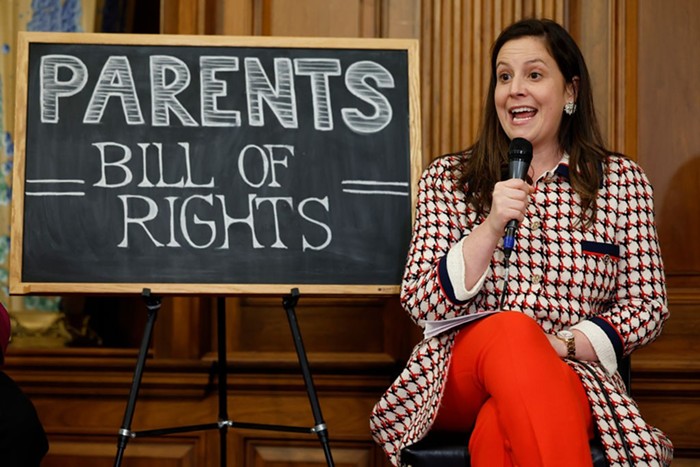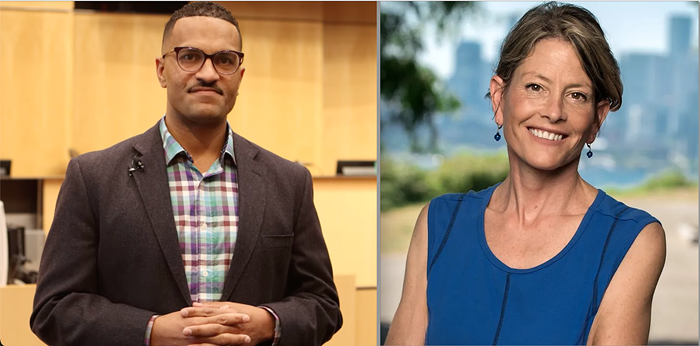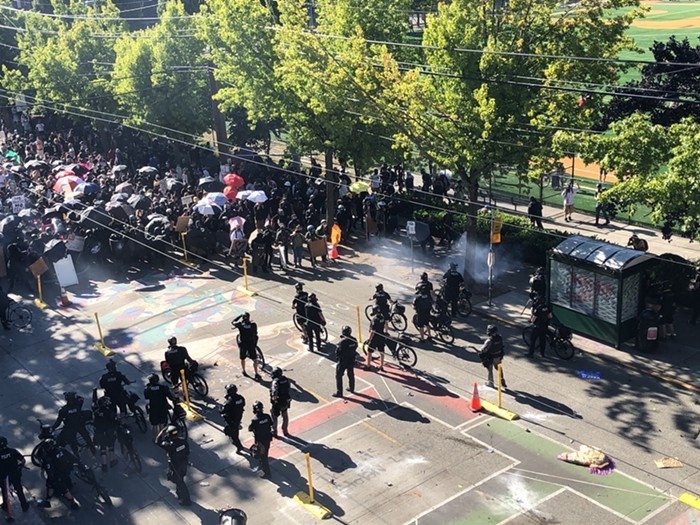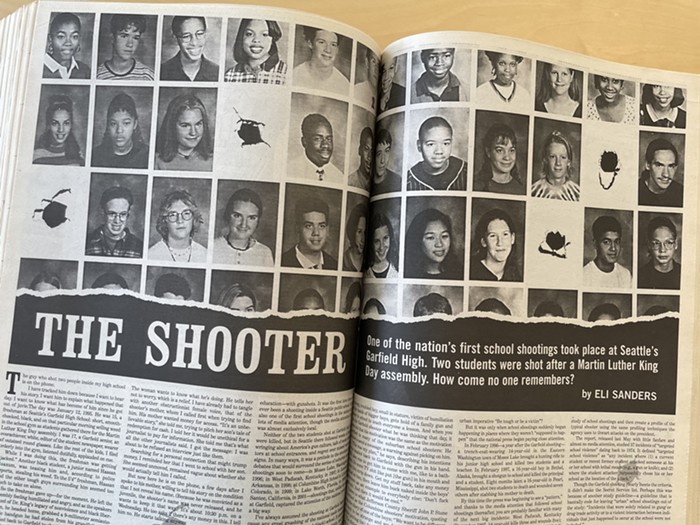Residents of the sleepy north end of 13th Avenue are unhappy with a local developer's plans to tear down the house and replace it with small, brownstone apartment buildings. Seventy-five of these neighbors wrote letters to the city to protest the plan. Unfortunately for the neighbors, increasing the amount of housing units on that street is in sync with the state's Growth Management Act. The act aims to control sprawl and decrease car travel with more urban density. Urban Designer Michael Kimmelberg, who works for the city, says, "the city wants to see multi-family development that achieves a human scale as much as possible in that area, and I know that's the intent of the project."
Still, a cute house on a double lot is a lot nicer to look at than some brownstones without a yard. So, smart urban planning be doomed, the neighbors came up with the idea that the house on the development site should be preserved as a historic landmark.
Their argument is based on two ideas. First, the man who lived in the house, Robert Hitchman, wrote an annual newsletter from 1952-1979 about pamphlets and publications on Northwest history. He also collected esoterica from the area. Second, the house was built in 1914 by an architect of limited acclaim, Max Umbrecht.
Neighbors did exhaustive research on Hitchman and the house, speaking to dozens of architects, renowned preservationists, and historians around the country. They made the clever case that the very nature of history should be redefined to reflect common people rather than just the establishment's bright stars. Dennis Anderson, who served on the Washington State Historical Commission, said, "It's not the large stately house of a capitalist, businessman, or politician. It's not a high-end, high-style house, but it is a testimony to how average people lived."
To open the landmarks process up to anyone who did amateur research sounds preposterous. But the neighbors in this area are influential, resourceful, and well connected--they include, for instance, Congressman Jim McDermott's ex-wife. In what can only be seen as a testimony to their importance, they made it through first round of the landmark process and got gushing, inaccurate coverage in the papers. The Seattle Times, amassing all their poetic energy, mused: "Robert Hitchman spent untold hours writing some of the region's best-known historical works." They also printed neighbors' claims that the development would destroy beautiful old trees. (Images of the developer's plans, in fact, preserve all the trees.)
The support was strange, given that only 12 historical houses in the city have landmark status based on famous residents, like the last territorial governor of Washington or the man who built the Ballard Locks. There are also other houses by Max Umbrecht in the area that are better preserved and more architecturally significant.
Developer Jason Kintzer says, "It's chutzpah that they think they have the right to go around standard methodology [like] land-use methods, and use a process that is saved for the greatest architecture." If the house received landmark status, Kintzer, who runs a small real estate company himself, would be stuck with a $675,000 house he couldn't alter. Kintzer says, "Usually you hear about rich developers crushing powerless neighbors. This is a case of rich, powerful neighbors crushing a small developer."
Ultimately, the pushy neighbors didn't succeed. The Board voted unanimously to reject the petition. In the end, the only appropriate response to the event was expressed by the head of the Landmarks Preservation Board: "I'm stunned by the amount of material and documentation both sides have presented in this case. It represents a mind-boggling amount of work. There are a number of projects around the city languishing without volunteer support. If this energy could be channeled into any number of projects around the city, there would be immeasurable benefit."


















